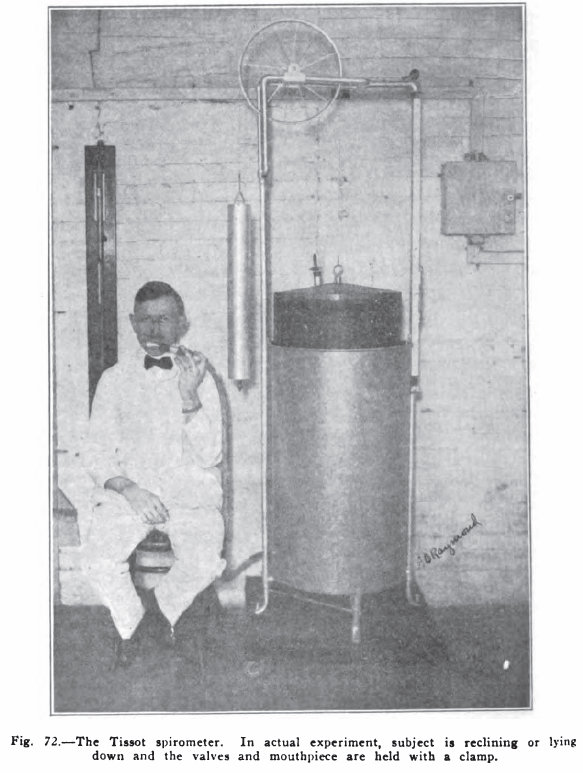From: The Newer Methods of Blood and Urine Chemistry, by By Rutherford Birchard Hayes Gradwohl, Abraham Jacob Blaivas, 1920, Page 372.
“The Tissot Spirometer is shown in figure 72. We have found the 100 liter size to be very serviceable in the clinic. This instrument is mounted on a platform having rubber wheels, and can be moved about the wards with ease. The bell of the spirometer is made of aluminum and is suspended in a water-bath between the double walls of a hollow cylinder made of galvanized iron. The height of the bell is 72 cm and the diameter is 42 cm. An opening at the bottom of the cylinder connects through a three-way stopcock with the rubber tube leading from the expiratory valve of the mouthpiece. The bell is counterpoised by means of a weight. In the original Tissot spirometer an automatic adjustment permitted water in amount equal to the water displaced by the bell to flow into a counterpoise cylinder as the bell ascended out of the water. The bell, being heavier out of the water than when immersed, is accordingly counterpoised in any position, although Carpenter has shown that this refinement is unnecessary. An opening at the top of the spirometer permits the insertion of a rubber stopper, through which are passed a thermometer, a water manometer, and a stopcock with a tube for drawing the sample of air. The scale on the side of the instrument gives the volume of air.
“During an observation the subject sits in a reclining position or lies on a couch. When the bell of the spirometer is placed at zero, the mouthpiece adjusted in the mouth, and the nose clamped, respiration is started, the expirations passed through the stopcock, which is turned so as to allow them to pass to the outside air. After a few minutes the stopcock is turned so that the expirations are passed into the spirometer for a definite length of time. At the end of the period the cock is again turned, and after the barometric pressure, temperature, and volume of the gas has been noted, the composition of air is determined in the Haldane gas analysis apparatus.”
